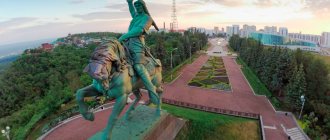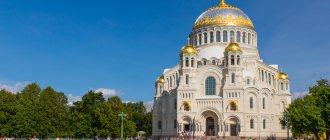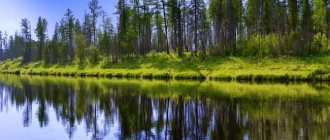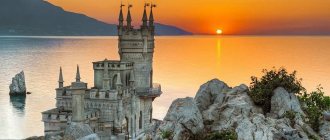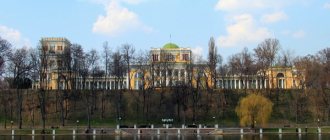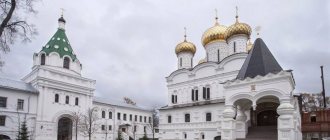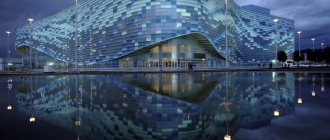After the flooding of a large area of the city, almost no ancient buildings remained. Most of Berdsk's attractions were built in the second half of the 20th century. The city has many monuments related to military history.
Local authorities, with the participation of citizens, are improving the city. Well-groomed streets and squares, a lot of greenery and luxurious flower beds - this is how Berdsk looks today.
Independent research by students as part of an educational project
Topic: City monuments
Research question:
Which city monuments have the status of historical and cultural heritage sites?
Purpose of the study:
Conduct a search on the Internet and library collections about the sights of the city of Berdsk.
Topic: Natural attractions of the city
Research Question:
What natural attractions of your hometown make it so beautiful?
Purpose of the study:
Collection of photographic materials and information about the natural attractions of the city of Berdsk.
Topic: City memorial plaques
Research Question:
In memory of which outstanding personalities are memorial plaques installed in our city?
Purpose of the study:
Collect information about the individuals in whose memory memorial plaques were erected in Berdsk.
Chapel of the Kazan Icon of the Mother of God
The architecture of this chapel amazes people. A beautiful building with sparkling domes attracts the gaze of tourists from afar. The decoration of the courtyard also wins the hearts of many people with its cleanliness and well-groomed appearance. Orthodox believers and simply guests of the city visit the chapel with great pleasure.
In addition to all the holy places, the city of Berdsk has a sufficient number of different entertainment places. There are also museums and ski resorts, bowling alleys and bowling alleys. Any tourist can have a great time in this city and at the same time receive a huge charge of energy and positive emotions.
Location: New Village street.
Temples of Berdsk that are worth visiting
Orthodoxy has remained an integral part of Russian culture in all eras. Even in young, newly rebuilt and restored cities, temples traditionally appear on the list of attractions of interest to tourists.
Transfiguration Cathedral
Address: st. Maxim Gorky, 44.
The majestic cathedral solemnly rises on Gorky Street in Berdsk - this is the main city temple. An elegant church building with multi-colored domes appeared already in the post-Soviet era. Its construction began in 1992.
The architect was Novosibirsk master Pyotr Chernobrovtsev. In 1998, the church’s belfry was replenished with nine bells, which were delivered here from Kamensk-Uralsk. It belongs to the Novosibirsk and Berd diocese and has the status of a cathedral.
Church of the Presentation of the Lord
Address: Lazo street, 17.
A wooden temple with a green roof topped with golden onion domes - this is how the cathedral looks today, whose history began simultaneously with the settlement. The Church of the Presentation of the Lord was rebuilt in the Berdsk fort, exactly in 1716, from which the city’s chronology is based.
The Soviet authorities closed the temple and then completely destroyed it. The remains of the church building were swallowed up by the waters of the Novosibirsk reservoir. Since the late 1980s, a revival of religious life began. The parish was restored in 1989, and already in the new century, in 2005, the appearance of the city was complemented by a temple, the successor of the ancient prison church.
Church of the Epiphany
Address: Borovaya st., 111.
A beautiful temple on Borovaya Street in Berdsk looks like a carved tower. This is a completely new building. Its construction was timed to coincide with the city's tercentenary. Construction began in 2014, the first stone was laid by Metropolitan Tikhon of Novosibirsk. He also consecrated the temple, where services have been regularly held since September 1, 2021.
Historical and Art Museum
Within the walls of the museum complex are collected exhibits telling about the creation of the city and its complex history. The exhibition consists of several halls with different themes. Each of them reflects the history of the city in different periods, starting with the creation of the Berdsk fort in 1716.
The museum hosts excursions on various topics. You can learn about the conquest of Siberia and see in the reconstructed huts how Russian peasants lived in the 18th–19th centuries. A separate exhibition is dedicated to the merchant Gorokhov, who put a lot of effort into the development of Berdsk.
The museum is open from 10 a.m. to 5 p.m. Come any day. Sunday, Monday – closed. Address: st. Sports, 9. You can get there by minibuses to the Museum stop.
Beaches of Gaspra
The village can be proud of its clean water and convenient beaches. This is also a good place for swimming with children:
- Dnepr Beach. Located on the territory of the sanatorium of the same name. You can get from the building to the shore using elevators on the rock. You can also go down the path. Paid entrance!
- Municipal beach. The entrance is free. Despite the fact that the beach is not very well equipped, there are quite a lot of vacationers there
- Beach "Marat". This beach of the Marat boarding house has a very convenient shore and descent into the water, so you are welcome here with children. In addition, the area is always clean.
- Central beach. There are always a lot of people who want to relax. You can rent jet skis and other attributes for active recreation. Admission is free.
Video review of the promenade and beaches of Gaspra
There are many beaches in Gaspra for every taste - sandy, with large and small pebbles - to choose from.
The picturesque nature of Berdsk and its surroundings
The city of Berdsk itself has several interesting natural attractions, but its surroundings will also be attractive to nature lovers.
Reserve "Berdskaya Spit"
GPS coordinates: 54.800278, 83.056944.
A corner of beautiful nature on the shores of the Ob Sea, three kilometers from the city. A place where you can breathe easily, where your soul and body can rest. Berdsk residents come here for the weekend with the whole family.
Tourists should not ignore this wonderful place, recognized as a natural monument and a specially protected area.
The corresponding status of the Berdsk Spit was assigned in 2006. Here you can get up close and personal with Siberian nature, see rare plants and meet animals listed in the Red Book of the Novosibirsk Region.
Park "On the Rocks"
Coordinates: 54.726441, 83.024454.
To relax in nature, barbecue in company and swim - for these purposes, citizens and tourists can go to the “On the Rocks” eco-park. This is a landscaped area near the waters of the Ob Sea, where there is a specially equipped beach, gazebos for relaxation, and barbecues for picnic lovers.
Here you can enjoy the beauty of the forest, walk through birch groves and pine forests, and even take a steam bath in a real Russian bathhouse. It is not necessary to limit your stay in the park to one day. Guests are given the opportunity to stay for a while, with various accommodation options available.
Berdskaya forest dacha
Coordinates: 54.765000, 83.025000.
One of the most famous nature reserves in the Novosibirsk region occupies an area of more than 141 hectares. The landscape reserve was created with the aim of preserving forests, plant and animal populations. The attraction has both environmental, scientific and educational significance.
Excursions for tourists are held here and the daily research work of Siberian scientists takes place. Any economic activity is prohibited on the territory. The pristine nature is what makes such monuments so valuable. Visitors to the Berdsk forest dacha will be able to see rare beautiful birds, mammals and reptiles, and rare plants listed in the Red Book.
Berdskaya Spit City Park
This place is intended primarily for family vacations. The beautiful flora allows you to admire tall pines and breathe clean air. Delicate and clean sand on the shore of the Ob Reservoir, warm water, allow you to swim in the summer season and have a wonderful time sunbathing under the warm sun.
Local cyclists also love this place; they organize a bicycle rally along the paved paths. Tourists and city guests spend time surrounded by pristine nature with great pleasure. Location: Morskaya street.
Table of project participants
- In the “ Edit
” mode, enter information about yourself into the table:
- Create a link to your page: The name of the participant’s page is written on the left, and the participant’s first and last name is written on the right.
- Indicate your school: School No. 13
- Provide a link to the competition work page: The name of the competition work page is written on the left, and the title of the work on the right.
- Indicate the full name of the manager or parent who helped you in your work: Last name First name Patronymic, position
| № | F.I. participant | School | Title of the competition work | FULL NAME. manager, position |
| 1. | Anton Mokienko | MBOU Secondary School Lyceum No. 7, 7th grade | Memorial plaques of the city of Berdsk | Shamardina Margarita Vladimirovna, bibliographer DB |
| 2. | Sukhanova Olga | MBOU secondary school No. 1 4th grade | Natural attractions of the city | Poglazova Irina Gennadievna, teacher |
| 3. | Nazarova Victoria | MBOU secondary school No. 1 4th grade | Natural attractions of the city | Poglazova Irina Gennadievna, teacher |
| 4. | Nikolaev Rostislav | MBOU secondary school No. 1 4a class | Sculptural composition “Storks” | Plesovskikh Lidiya Ivanovna |
| 5. | Balaeva Nastya | MBOU secondary school No. 1 4a class | Sculptural composition “Storks” | Plesovskikh Lidiya Ivanovna |
| 6. | Multsyna Tanya | MBOU secondary school No. 12 4a class | To the Warriors Internationalists | Shamardina Margarita Vladimirovna, bibliographer DB |
| 7. | … | … | … | … |
| 8. | … | … | … | … |
What to watch and where to go
- The calling card of Borovichi and one of the main attractions is the arched bridge over the Msta River. Its peculiarity is that it was the first of its kind in Russia. It was designed by Belelyubsky at the beginning of the last century and immediately became an example of bridge construction. The three-hinged steel structure of this bridge was later used as a model for the construction of the Sydney Harbor Bridge in Australia. In 1995, the bridge was included in the list of cultural and historical heritage sites of all-Russian significance. In 2005, the structure turned one hundred years old; now it is used as a pedestrian bridge and is a favorite place for tourists - memorable photos are taken here.
- There is also a local history museum in the town. History buffs can book a tour and learn more about the history of Borovichi by viewing exhibitions and slide shows showing the life of merchants and artisans of the county town. At the end of the excursion, everyone is offered tea according to local traditions; tea is served with sweets and pastries made at a local confectionery factory.
- One of the most important and oldest architectural monuments is the wooden station building. It was built back in 1876, and the station is still in successful use today. The building underwent a major reconstruction in 1976, but its appearance remained almost unchanged. This station can be seen in the film “State Councilor”.
- The Holy Spirit Jacob Borovichi Monastery is definitely worth a visit. It was built and consecrated back in the 14th century, and continues to function today. The Cathedral Church, built of stone in the 17th century, has survived to this day; before that, the monastery consisted of three wooden buildings in which 14 monks and an abbot lived. Near the walls of the monastery there is a working spring with healing water.
- Fans of architectural and historical sights will also be interested in the Trinity Cathedral. True, today there are no services held here; the local House of Culture is located in the temple.
- History buffs can go with archaeologists outside the city to excavations and explore the remains of mounds and ancient settlements. In Borovichi there is a very interesting monument - a huge chair made of wood. It was installed in front of a local furniture manufacturing plant as a symbol of production.
- Another attraction that is not exactly in Borovichi, but also very interesting, is the suspension bridge in the village of Gverstyanka. To tickle your nerves and walk across the bridge, you only need to drive a couple of kilometers from the city.
- Just beyond this bridge stands an abandoned, once very beautiful mansion. This is the Nekhlyudov estate. The building's architecture resembles a small castle; there is even a belief that the ghost of the former owner lives in it, wanders at night, moans and rumbles. Obviously, for this reason, none of the locals are buying the building or wanting to put it in order.
- If you travel in the summer and like to splash around in the water, then a visit to the local water park will be just right for you. There are two slides - straight and winding, four swimming pools - with paths, with fountains that create a massage effect, with a jacuzzi and a children's pool, as well as a sauna.
In addition to those listed above, there are also the following temples and churches in the district:
- Assumption Cathedral, built in 1800, this temple is distinguished by very interesting architecture, combining several styles.
- Church of the Holy Great Martyr Paraskeva - near this temple there is also a sacred spring.
- The church dedicated to the icon of the Mother of God “Tenderness”, built in 1871, is famous for its source of Yakov Borovitsky.
- Church of the Dormition of the Mother of God in Opechensky Posad.
You can stay overnight in one of the guest houses. Since Borovichi is a small and provincial town, it is difficult to find any information about local hotels and book a room on the global network. But this is not a problem - there is always a place to stay in the guest house. There are no problems with food either - there are enough small restaurants, cafes and snack bars. Of course, you won’t get any special delights, but you can have a hearty and inexpensive lunch or dinner. And you can get here from Moscow and St. Petersburg either by private car or by direct train. Borovichi in the Novogorod region is a small but cozy town that warmly welcomes its guests. Local residents are proud of their sights and willingly show them off to visitors. You can visit here both in summer and winter; a warm welcome and interesting excursions always await you
Cultural recreation and entertainment in Berdsk
There are also places in Berdsk for cultural, spiritual, recreation, as well as for active leisure, which is an integral part of every person’s life.
Cinema "Orion"
Address: Ostrovsky street, 69.
The Orion cinema has been operating in Berdsk for half a century. It was built back in 1969, a year later the cinema hall received spectators for the first time. Over its history, it has become one of the symbols of the city and its cultural landmark. Today it is a modern, comfortable two-screen cinema with a bar and a poster rich in world premieres. Orion is located in the heart of the city’s cultural life - in the Park of Culture and Recreation.
House of Culture "Rodina"
Address: 48B, Microdistrict.
The building, typical of the Soviet era, with columns and a triangular roof looks solemn and formal. The very appearance of the 1958 building hints that the city’s cultural center is located here.
The cultural center still remains the main concert venue of Berdsk: creative evenings, festivals, theater and circus performances, and performances by celebrities who visited Berdsk on tour are held here. Dance and vocal groups operate on a permanent basis at the House of Culture. There is a circus studio and its own brass band.
Ice Sports Palace "Berdsk"
Address: Borovaya st., 103A.
In the city of Berdsk, which is not rich in entertainment, the ice arena has become an important object. Sports clubs operate here and city residents spend their leisure time. The ice hosts mass skating and winter sports competitions. The auditorium seats 900 people. The sports complex was opened in 2007.
Situated close to Novosibirsk, a million-population city, Berdsk remains largely dependent on its “big neighbor.” Such cities often fall out of sight of tourists. But in vain, because even having lost a significant part of their historical heritage, they prove that many interesting things can be found in the small settlements of our country. The history of Berdsk itself, shown through its sights, cannot leave anyone indifferent.
Church of the Presentation of the Lord
This small beautiful temple was restored on the site of an old wooden church, destroyed during the Soviet era when part of the city was flooded. The new church looks solemn and elegant. Ancient icons have been preserved.
Address: st. Lazo, 18. The church is located near the Beijing stop.
Where to go first in Berdsk
The city has a complicated and very interesting history; it begins in the 18th century with the Berdsk fort. The founding date is considered to be 1716. The past 20th century was a turning point for the settlement. In 1944, the former village of Berdskoye became a city, and in the next decade it acquired a new, close to modern appearance. Nowadays in Berdsk there are several significant places related to history and more.
Ob Sea
Coordinates on the map: 54.765779, 82.923768.
The Novosibirsk Reservoir is the most famous artificial reservoir in the region. People affectionately, but at the same time solemnly call this object the Sea of Ob. Berdsk is not the only city located on the banks of the reservoir, but it was for Berdsk that this water body played a fatal historical role.
The Ob Sea arose during the construction of the Novosibirsk hydroelectric power station and is located exactly in the place where the historical part of the city was located. Berdsk became a kind of Soviet Atlantis, being flooded. The settlement was moved 8 kilometers from its original location, rebuilt around one of the outlying areas where the railway station was located.
Not long ago, information appeared in the media that, as the waters of the Ob Sea recede, they reveal artifacts and monuments from a hundred years ago to the eyes of townspeople and tourists. These include the burial places of local famous historical figures.
Among them, the figure of the merchant Vladimir Gorokhov, who made a great contribution to the development of the village, stands out. He was reburied in 2008. The waters also showed the grave of State Councilor Mikhail Larionov, a significant figure for the city, about whom little information has been preserved.
Local historians consider the rescue of his remains an important mission.
Today the Ob Sea is an object of economic and recreational importance. It has become a favorite place for fishermen, beach lovers and outdoor gatherings along the shores of a large reservoir.
Museum of History and Local Lore
Address: Sportivnaya street, 9.
The vicissitudes of the complex, tragic and partly even mysterious history of the settlement of Berdskoye, and subsequently the city of Berdsk, can be learned in the main city museum. It is called historical and artistic, combining under one roof exhibitions of local history and demonstration of works of art. Of the 16 thousand exhibits in the museum’s collection, the artistic part occupies approximately one and a half thousand. Museum funds are constantly replenished.
The Berd Museum was founded in the late 1960s thanks to a group of enthusiasts. In 1967, it first opened its doors to visitors, and in 1970 it received municipal status. Today the museum is not just an exhibition complex, but also a significant cultural center of the city, conducting educational and scientific work. The museum is the initiator and active participant in many projects to preserve and revive the historical heritage of the city, perpetuating the memory of famous residents of Berdsk.
Victory Park and Glory Memorial
Address: corner of Ostrovsky and Sportivnaya streets.
There are several interesting parks in Berdsk. One of the main ones is Victory Park. Already from the title it is clear that it is dedicated to the most tragic event of Soviet history - the Great Patriotic War. By and large, the entire park was conceived as a memorial complex.
A popular place for relaxation and walking, it is also a place of memory. In the park you can see examples of military equipment. Walking alleys converge to the central object - a memorial sculptural ensemble located on a small square. The Eternal Flame burns here, next to it are the figures of four soldiers holding a tombstone with the legendary inscription “No one is forgotten, nothing is forgotten.”
The city owes the appearance of the memorial to the famous master, honored artist Alexander Chebotarev. It was he who sculpted the composition known as the “Memorial of Glory”. It was installed on Victory Day in 1972.
City Park of Culture and Recreation
Address: corner of Sverdlov and Ostrovsky streets.
The park of culture and recreation is a traditional place for holding public events and for everyday leisure of citizens. Berdsky Park is located in the very center of the city and covers an area of just over ten hectares. It appeared on the site of a park laid out back in the 1960s. However, the official history of Berdsk’s main park began in 1980.
On its territory there are several city monuments; for lovers of active recreation there is a dance floor and equipped places for sports; children can frolic in the play area and go on rides. There is also a restaurant and hotel complex here, which are popular among guests of Berdsk.
Sculpture "Big Ear"
This work of art is located in the central park. Almost no one passes by this unusual and peculiar monument. In Russian fairy tales it is described a little differently, but the sculptors worked hard and used their imagination in a completely different direction. Now this figurine of a little man with a big ear delights park visitors.
Everyone tries to whisper their cherished wish into the ear of this sculpture, people believe that they all come true. Tourists will find this sculpture interesting, and they will definitely want to leave a photo next to the Big Ear as a souvenir. Location: Gorky street.
Many interesting and attractive places can be seen while walking along the streets of the city of Berdsk. The city will tell about many events that happened in it during its existence. Special excursions with professional guides are organized; by visiting them, you can enjoy the beauty of the city and visit many attractions. The city is always happy to meet any tourists at any time of the year and welcomes them with its warm hospitality.
The best museums in Irkutsk
The most interesting museums in the city that are definitely worth a visit.
Victor Bronstein Gallery
A large art gallery, the exhibition halls of which have an area of 1300 m², and the number of exhibits in it exceeds 1500. The initiator of the creation of the gallery is the philanthropist, collector and businessman Viktor Bronstein. Paintings and sculptures are on display. A special place is occupied by the exhibition of Dasha Namdakov’s dolls. The gallery has a store where you can purchase original works by recognized and young artists.
Irkutsk Regional Museum of Local Lore
Founded in 1782. The main branch, which is located in a 19th-century mansion on Karl Marx Street, houses the history department. In total, the museum has 7 departments, including the Rasputin Museum and the Angara Icebreaker. Among the exhibits are archaeological finds from the Paleolithic period, geological and zoological exhibitions, and furniture from the 19th century. Some of the exhibitions are dedicated to the development of the Angara region. There are bus tours around the city.
Art Museum named after V. P. Sukachev
A complex of 9 historical buildings and a large park. The main building of the museum is located on Lenin Street - a stone two-story mansion built at the beginning of the 20th century, surrounded by a picturesque garden. The museum's collections contain about 23,000 works of art - paintings, sculptures, graphics. The most valuable collections are rare monuments of the ancient peoples of the Baikal region, objects of ancient Russian art and the countries of the East.
Museum "At the Landfill"
An unusual museum located at a solid waste landfill. The gate to the museum was made in the form of an ancient fort by the workers of the landfill on the initiative of its chief. The exhibition area is separated from the waste dumping area. It houses two military frigates, siege weapons, horsemen and footmen. All exhibits are made from recycled household waste.
Museum of the History of the City of Irkutsk
Tells about the way of life, life and culture of Irkutsk residents in different time periods - from the first settlements to the present. There are exhibitions of archeology and ethnography. Dioramas were created depicting the bright outfits of the ancient inhabitants of the Baikal region. In total, the museum's collections contain more than 60,000 exhibits. The main department of the fund is located in the luxurious mansion of the merchant-philanthropist Sibiryakov on Frank-Kamenetsky Street.
Valentin Rasputin Museum
Dedicated to the work and life of the writer. Located in a wooden mansion of the 19th century on Sverdlova Street. Rasputin's family donated Rasputin's personal belongings, furniture from his office, manuscripts, documents, and photographs to the museum. This made it possible to recreate in the museum a realistic atmosphere in which Rasputin lived and worked. Of particular interest is his extensive personal library, which contains many Russian language dictionaries.
Berdsk
- popularity
- popularity
- name
- name
- All attractions (14)
- Architecture: buildings and structures (2)
- Temples and monasteries (1)
- Museums, exhibitions and galleries (0)
- Observation platforms (0)
- Monuments and Monuments (0)
- Historical districts, streets, squares (0)
- Natural sites, gardens and parks (9)
- Amusement parks, water parks (0)
- Zoos, aquariums (0)
- Theatres, cinemas, circuses and stadiums (0)
- Festivals and holidays (2)
- Markets, shopping, shops (0)
- Memorials and cemeteries (0)
- Technological attractions (0)
- Educational and scientific institutions (0)
- Tourist Information Centers (0)
Siberian Tattoo Festival
The main attractions of a modern city are natural, and it is these that residents of Novosibirsk and neighboring regions come to admire.
On the shores of the Ob Sea and Berdsky Bay there are two parks that are resort centers. There are about eighty holiday homes and sanatoriums throughout Berdsk. Some of them were built during the Soviet years and now many are under renovation.
There are several parks in Berdsk, of which Central Park and Victory Park can be distinguished. In the latter you can look at the memorial to those who fell in the Great Patriotic War and beautiful alleys. There is another monument to the era of the civil war, namely the partisans who established new power in the region.
There are almost no historical sights left in Berdsk: they are all located at the bottom of the Ob Sea, just like all the old buildings of Berdsk. Only the water tower, which was erected at the beginning of the last century, and the Berdsky station building survived. There are many churches in the city, even at sanatoriums, but everything was built recently. Transfiguration Cathedral is the main temple of the city, built in 2004. Also worth noting is the wooden Church of the Presentation, the first church in modern Berdsk. The city has a history museum that tells the story of a city that no longer exists.
Source
Architectural appearance of old Berdsk. a look into the past
Porto Franco / A.P. Ivanova, N.P. Kradin // Project-Baikal. - No. 20. - pp. 172-178; Ivanova, A.P. Stylistic analysis. Regional aspect / A.P. Ivanova. - Khabarovsk, Tomsk State University Publishing House, 2013. - 206 p.
2. Gwendolyn Wright. The Politics of Design in French Colonial Urbanism. — University of Chicago Press. 1991; Sayyad, Nezar, ed. Forms of Dominance. On the Architecture and Urbanism of the Colonial Enterprise. - Aldershot (England): Avebury, 1992; Crinson, Mark. Empire Building: Orientalism and Victorian Architecture. - London/New York: Routledge, 1996; Architecture, Power, and National Identity (Hardcover). - Routledge — 2008. 3. Project Russia. - (3. 2008). - No. 49.
4. Kradin, N.P. Russian architecture of the Far East of the 17th - early 20th centuries: dis. in the form of a scientific report... Doctor of Architecture / N.P. Kradin. - M., 2003.
5. Kradin, N.P. Harbin - Russian Atlantis / N.P. Kradin. — Khabarovsk: publisher A.Yu. Khvorov, 2001. - 352 p.
6. Levoshko, S.S. Russian architecture in Manchuria. The end of the 19th - the first half of the 20th century. / S.S. Levoshko. — Khabarovsk: Publishing house “Private Collection”, 2003. -175 p.
7. The creative heritage of N. Trotsky on the website https://sovarch.ru/; materials related to the work of I.G. Langbard on the website “Archives of Belarus”: https://archives.gov. by/index.php?id=398471; https://archives.gov.by/index.php?id=398471
8. Architecture of the USSR. - 1958. - No. 11. Competition for the design of the Palace of the Soviets in Moscow. - pp. 15-21; Architecture of the USSR. - 1960. - No. 1. Competition for the design of the Palace of the Soviets. - P. 9-40; Posokhin, M. Kremlin Palace of Congresses / M. Posokhin, A. Mndoyants, N. Pekareva. - M. Stroyizdat, 1966.
I.S. Kelina, Berdsk, Novosibirsk region
architectural appearance of old Berdsk. a look into the past
In 2021, the city of Berdsk will turn 300 years old. Over its three-hundred-year history, the city has experienced many shocks and changes, including a change of location, when in the middle of the last century, in connection with the construction of the Novosibirsk hydroelectric power station, Berdsk was moved to a new location, which means it was rebuilt from scratch. The architecture of modern Berdsk is not much different from other cities: standard residential buildings, most of which were built in Soviet times, modern shopping and entertainment centers, which also differ little from each other. The city today is in search of its own identity, originality, that “zest” that would make it attractive in the eyes of tourists. And this search for our own landmarks again forces us to look back into the past, again to regret that the visual history of the city has sunk into oblivion, and only old photographs will remind us of the former appearance of Berdsk.
What was Berdsk, namely the village of Berdskoye (city status was obtained in 1944) like in the first decades of the 20th century? According to archival documents and descriptions of travelers, it was a large commercial and industrial village. Main occupation
Rice. 1. Sretenskaya Church in old Berdsk
The local population had agriculture, but trade, crafts, and industry developed here (8).
Judging by the photographs kept in the collections of the Berd Historical and Art Museum, the village had a decent appearance: stone buildings, solid wooden houses, a vocational school, a two-year school, a people's house, built with the money of the merchant-philanthropist Vladimir Aleksandrovich Gorokhov, Gorokhov's grain mill , equipped with the latest technology, where already at the end of the 19th century. electricity was used.
“The huts of merchants and rich peasants stood out for their original architecture, carved frames, and decorated shutters. On Bolshaya Street there was a two-story barracks where the soldiers of the artillery unit were housed, nearby was the building of the volost government, then the house of the justice of the peace and bailiff. On the same street there were several half-stone houses and shops, as well as wooden benches, a wine cellar and a gambling house” (9).
The iconic architectural structure of old Berdsk was the Sretenskaya Church (Fig. 1), by far the most beautiful building in the village. It was built in 1808 “through the diligence of the former manager Daniila Basarev and his parishioners” (1).
The large white-stone church had three altars: the main one in honor of the Presentation of the Lord, the side altars in honor of the Epiphany and the Dormition of the Blessed Virgin Mary. “The building is made of stone, with the same bell tower and fence, it is strong. There are enough utensils” (2). In 1891, the Presentation Church was expanded, which is recorded in the “Gazette of an independent church, Barnaul district, Berdskoye village, Presentation of the Lord, Deanery No. 16 for 1891: “The building is stone, the bell tower is stone, but at the present time, on the occasion of the expansion of the church, it was dismantled, covered with iron and painted with oil paint; strong. The fence is stone. Both the church and the fence are plastered and whitewashed with lime; there is a wooden guardhouse with it” (3).
The Presentation Church was truly the most architecturally beautiful building in the entire district, but this did not save it from the sad fate that befell many churches and cathedrals during the years of Soviet power. According to the memoirs of native Berdsk resident A.I. Maksimenko, “... one spring day, many strangers, “experts in their field,” came to Berdsk and with extraordinary speed began to remove the bells and destroy the church chapel - the tomb of the merchant Gorokhov. They loaded and carried away bells and other church utensils. Within a few days the church was destroyed and looted. Berdsk is somehow sadly empty.” So in 1939, by resolution of the Novosibirsk Regional Executive Committee, the Sretenskaya Church was closed and converted into a club, and in the early 1950s. During the formation of the flood zone of the Ob Reservoir, the building was completely destroyed.
According to information about the class composition of the population of the village. Berdsky in 1908 there were 97 merchants in the village who had their own houses and shops. “On Bolshaya Street there were all the big houses with shops of Berdsk merchants: Mashinsky, Kalinin, Mashtakov, Kuptsov, Kartashov and others. These were good wooden houses, some with two floors” (From the memoirs of old-timer V.I. Khomutov).
Tomsk merchant of the 1st guild V.A. Gorokhov in the village. Berdsk built a coarse mill - one of the largest in Altai. It was a wooden four-story building, equipped with Western European machines that worked using electricity; the workers’ village at the mill, popularly nicknamed “Gorokhovsky,” was also illuminated with electricity. According to the memoirs of contemporaries: “The workers’ settlement at the mill was built up with good-quality two- and four-apartment houses; covered with iron, with outbuildings for cows and pigs, poultry. All residents of the Gorokhovsky mill village lived well.” (From the memoirs of V. Khomutov).
Vladimir Aleksandrovich Gorokhov was not only a successful entrepreneur, but also a philanthropist, a champion of education and culture. With his funds, a craft school, a people's house, and also a beautiful mansion, the “Berdskaya dacha”, were built - a three-story house with a garden and a fountain, where the Gorokhov family lived (Fig. 2). In the family album, donated by the merchant’s descendants, there are many photographs with views of old Berdsk: there is a mill, a house surrounded by greenery, and a tennis court. Where did all this splendor disappear in the whirlpool of revolutionary events?
It is known that during the Civil War, a large punitive detachment of Annenkov was located on the territory of the mill, and on September 11, 1919, by decision of the military court, Berd underground workers, among whom were members of the partisan detachment, were shot here in the area of the mill (10). The mill itself continued to operate until it was flooded: it was municipalized (4), called “state mill No. 200 named after Frunze”, and later - flour mill No. 10.
The People's House became a kind of House of Culture - a club where Komsomol meetings were held, and folk instrument groups, drama and choir, also appeared.
The vocational school was renamed the Berdsk Vocational School with a four-year course, starting in 1924 to train specialists in the repair of agricultural machines and implements. In December 1929, the school burned down.
The fate of the Gorokhov house remains unknown; it could well have been used by the new government to house some institutions, as was the case with the houses of other merchants, but there are no documents confirming this fact in the museum. Rice. 2. The Gorokhovs’ house in old Berdsk
Rice. 3. Rest House of the All-Union Central Council of Trade Unions
Of the buildings built on the territory of old Berdsk during the period of Soviet power, the All-Russian Central Council of Trade Unions Rest House (physiotherapeutic sanatorium) stands out - a closed medical institution designed to improve the health of party and Komsomol workers (Fig. 3).
Berdsk has always actively used its recreational resource and had the glory of a resort town, located in a picturesque river valley surrounded by a pine forest. The address of the Manager of the Tomsk estate of the Department of the Cabinet of His Imperial Majesty dated May 29, 1908 reports “... the abolition of the expansion
reniya clearings along the tract along the Ob River within the boundaries of the Berdskaya dacha, due to the fact that the preservation of the plantings of this dacha is necessary for economic purposes. Berdsky as one of the best resorts in Tomsk district" (5).
The building of the All-Russian Central Council of Trade Unions Holiday House, captured in the photograph, still amazes with its monumentality and beauty; it is difficult to imagine that this majestic structure with columns and bas-reliefs adorned Berdsk in the mid-1930s. last century. And yet this is a historical fact: in 1935, after construction that dragged on for several years, the health resort, equipped with the latest medical equipment, equipped with a hydropathic clinic and a croquet court, opened its doors to selected vacationers, remaining for many years the most respectable and rich in Siberian region. Most likely, the building, as conceived by the architect, was supposed to symbolize the greatness of the new time: a huge three-story building, consisting of several buildings, with large stained glass windows and a glass bay window, in which, presumably, the elevator was located. the central part was decorated with a portico with columns, and there were bas-relief panels above the entrance. The interior design of the sanatorium was designed by the sculptor A.G. Gamulin is a student of Desgrange and Crocci, and since 1933 has been a member of the Union of Artists of the USSR. He made two fountains: “Bowl” and “Frog”. Unfortunately, among the museum documents and archives it was not possible to find the name of the author of the project of this wonderful building.
During the transfer of the city to a new location, in connection with the construction of the Novosibirsk hydroelectric power station and the flooding of the territory of old Berdsk, the sanatorium building was destroyed. The city archives of Berdsk preserved the order for the Berd sanatorium of the All-Union Central Council of Trade Unions No. 25 dated April 15, 1955, which states that “... in accordance with the instructions of the Central Administration of Resorts, Sanatoriums and Holiday Homes of the All-Union Central Council of Trade Unions, the decision of the Novosibirsk Regional Executive Committee of April 7 1955 and the order of the head of the Novosibirsk local medical administration of the All-Union Central Council of Trade Unions No. 118 dated April 9, 1955 in connection with the flooding of the city of Berdsk Berdsky tubsanatorium of the All-Union Central Council of Trade Unions on May 9 of this year. finishes work and is liquidated” (6).
Today, in modern Berdsk, only a few fragments of the old city have survived: houses located in the private sector, the building of a medical college and the “Miagkikh house” (Fig. 4). The last one named is perhaps the only surviving monument of wooden architecture. This house, built in 1910, named after its builder and owner, was located on Sovetskaya Street - the main street in old Berdsk. In the 1950s was moved to the village of Novy. The pediment, cornices, and platbands are decorated with carvings; the ends of the roof are decorated with carved “valances”. In the center of the pediment there is an openwork “sun”; carving motifs - plant patterns.
By decision No. 238 of the executive committee of the Berdsk City Council of Deputies dated August 27, 1971, “... an old house with wooden carvings, as a monument to the art of folk craftsmen, was taken under state protection as a monument of local significance” (7). The owners of the house were issued a safe conduct letter. In addition, the Myagkikh house is also a monument of historical and cultural heritage, since in the early 1950s. S.S. lived there while in exile. Yudin is a repressed academician, a world-famous surgeon.
Today this is a house for two owners: one half of the house is maintained by the owner in proper condition, the other is in complete disrepair - the wooden carvings deteriorate under the influence of time and weather conditions, the foundation is destroyed. The owner of half the house, who contacted the city museum, was concerned about the phenomena of gradual destruction; an appeal was jointly prepared addressed to the head of the city
rice. 4. House of the Myagkikh family in old Berdsk
on taking measures to preserve the building as an object of architectural, historical and cultural heritage of the city of Berdsk. To date, no measures have been taken to resolve this issue and the city is slowly moving towards the loss of another architectural monument, of which there are practically none in Berdsk.
Berdsk lost a lot of what today could be a visible and tangible result of its three-hundred-year development, there were reasons for this, and little could be changed.
Today we are trying to make our city interesting, to find its “zest”, to “paint” its face, sometimes creating fantastic historical and architectural projects that have a distant relationship with the past, not paying attention to those crumbs that history has miraculously preserved for us. Literature
1. Report on the Church of the Presentation of the Lord of the Tomsk department, Barnaul district, Berdsk village for 1865 // GATO. F. 170. Op. 1. D. 468. 2. Ibid.
6. Department of archival service in Berdsk. F. 11. Op. 2. No. 23.
7. Department of Archive Service of Berdsk. F. 1. Op. 1. No. 236.
8. Semenov-Tyan-Shansky. Unsentimental journey // Around the world. - 1990. -№10. — P. 38-43.
9. Smetanin, E.N. Berdsk. Brief historical sketch / E.N. Sour cream. - Novosibirsk, 1983. - P. 16.
10. Fedotov, L. City on Berdi (historical sketch). Manuscript. Fedotov Archive. BIHM. — P. 163.

